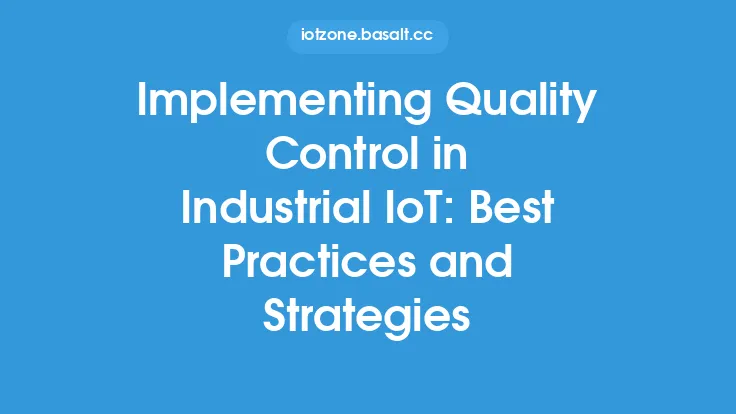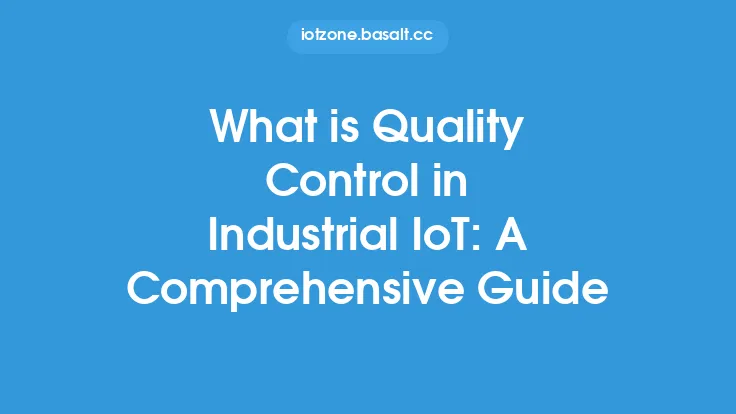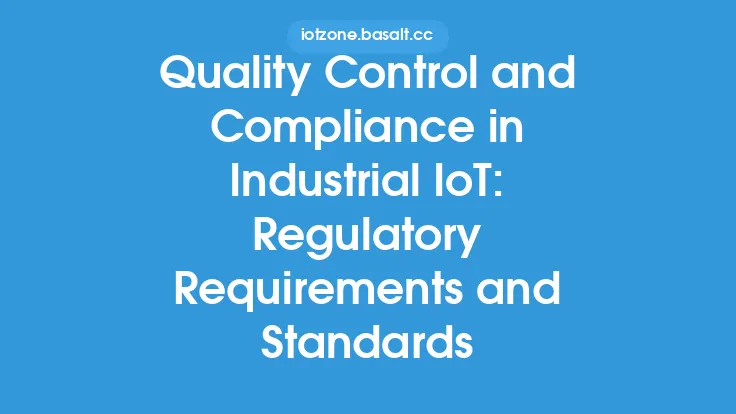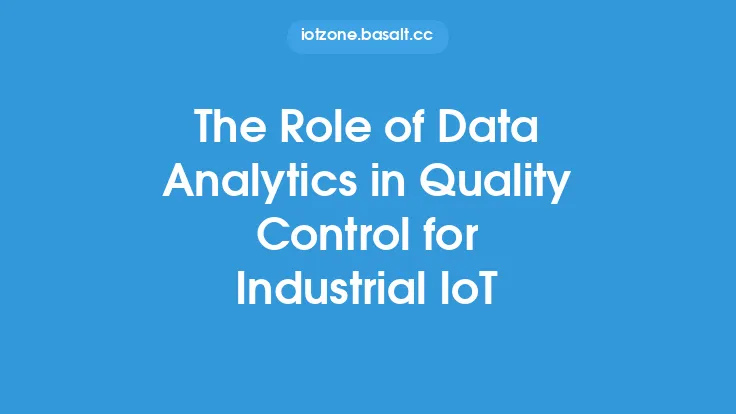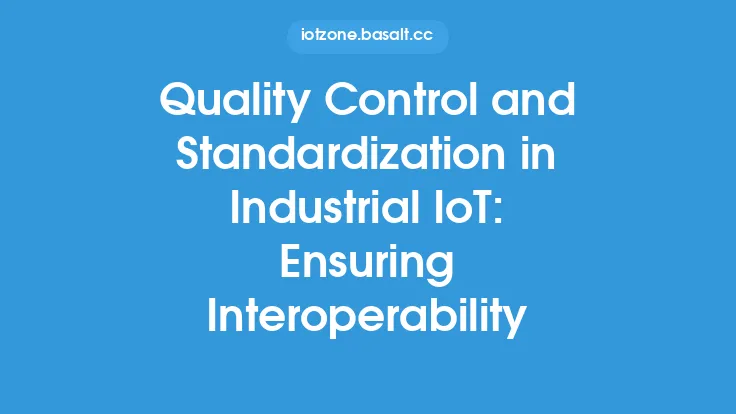In the realm of Industrial Internet of Things (IIoT), quality control is a critical aspect that ensures the reliability, efficiency, and productivity of industrial operations. To measure the effectiveness of quality control processes, it is essential to track and analyze key performance indicators (KPIs) that provide insights into the overall performance of the system. Quality control metrics in IIoT are designed to monitor and evaluate the quality of products, processes, and services, enabling manufacturers to identify areas for improvement and optimize their operations.
Introduction to Quality Control Metrics
Quality control metrics in IIoT are quantifiable measures that help manufacturers assess the performance of their quality control processes. These metrics can be categorized into several types, including process metrics, product metrics, and service metrics. Process metrics evaluate the efficiency and effectiveness of quality control processes, such as inspection and testing procedures. Product metrics assess the quality of products, including defect rates, yield, and reliability. Service metrics, on the other hand, evaluate the quality of services provided, such as maintenance and repair services.
Key Performance Indicators (KPIs) for Quality Control
KPIs are specific metrics that are used to measure the performance of quality control processes. Some common KPIs for quality control in IIoT include:
- Defect rate: The number of defective products or components per unit of production.
- Yield: The percentage of products or components that meet quality standards.
- Reliability: The ability of products or components to perform their intended functions over time.
- Mean time between failures (MTBF): The average time between equipment failures.
- Mean time to repair (MTTR): The average time required to repair or replace faulty equipment.
- Overall equipment effectiveness (OEE): A measure of equipment performance, taking into account factors such as availability, performance, and quality.
- Customer satisfaction: A measure of customer satisfaction with products or services.
Data Collection and Analysis
To track and analyze quality control metrics, manufacturers need to collect and analyze data from various sources, including sensors, machines, and other industrial equipment. This data can be collected using various technologies, such as:
- Sensors: Temperature, pressure, vibration, and other types of sensors can be used to collect data on equipment performance and product quality.
- Machine learning algorithms: These algorithms can be used to analyze data and identify patterns and trends that may indicate quality control issues.
- Cloud-based platforms: Cloud-based platforms can be used to collect, store, and analyze data from various sources, providing real-time insights into quality control performance.
- Data analytics software: Specialized software can be used to analyze data and provide insights into quality control performance, enabling manufacturers to identify areas for improvement.
Implementation of Quality Control Metrics
To implement quality control metrics effectively, manufacturers need to follow a structured approach. This includes:
- Defining quality control objectives: Manufacturers need to define clear quality control objectives, such as reducing defect rates or improving yield.
- Identifying key performance indicators: Manufacturers need to identify the KPIs that will be used to measure quality control performance.
- Collecting and analyzing data: Manufacturers need to collect and analyze data from various sources to track and evaluate quality control performance.
- Taking corrective action: Manufacturers need to take corrective action to address quality control issues, such as adjusting production processes or repairing faulty equipment.
- Continuously monitoring and improving: Manufacturers need to continuously monitor and improve quality control processes, using data and analytics to identify areas for improvement.
Benefits of Quality Control Metrics
The use of quality control metrics in IIoT offers several benefits, including:
- Improved product quality: By tracking and analyzing quality control metrics, manufacturers can identify areas for improvement and optimize their production processes to produce higher-quality products.
- Increased efficiency: Quality control metrics can help manufacturers identify inefficiencies in their production processes, enabling them to optimize their operations and reduce waste.
- Reduced costs: By reducing defect rates and improving yield, manufacturers can reduce costs associated with rework, scrap, and warranty claims.
- Enhanced customer satisfaction: By producing high-quality products, manufacturers can enhance customer satisfaction, leading to increased loyalty and retention.
- Competitive advantage: Manufacturers that use quality control metrics to optimize their operations can gain a competitive advantage in the market, differentiating themselves from competitors and attracting new customers.
Challenges and Limitations
While quality control metrics offer several benefits, there are also challenges and limitations to their implementation. These include:
- Data quality issues: Poor data quality can lead to inaccurate or incomplete metrics, making it difficult to track and analyze quality control performance.
- Lack of standardization: The lack of standardization in quality control metrics can make it difficult to compare performance across different production lines or facilities.
- Limited visibility: Limited visibility into production processes can make it difficult to track and analyze quality control metrics, particularly in complex or distributed systems.
- Cultural and organizational barriers: Cultural and organizational barriers can make it difficult to implement quality control metrics, particularly in organizations with traditional or siloed structures.
Best Practices for Implementing Quality Control Metrics
To overcome the challenges and limitations of implementing quality control metrics, manufacturers should follow best practices, such as:
- Establishing clear quality control objectives: Manufacturers should establish clear quality control objectives, such as reducing defect rates or improving yield.
- Using standardized metrics: Manufacturers should use standardized metrics, such as defect rate or OEE, to track and analyze quality control performance.
- Implementing data analytics: Manufacturers should implement data analytics to collect, store, and analyze data from various sources, providing real-time insights into quality control performance.
- Providing training and support: Manufacturers should provide training and support to employees, enabling them to understand and use quality control metrics effectively.
- Continuously monitoring and improving: Manufacturers should continuously monitor and improve quality control processes, using data and analytics to identify areas for improvement.
